Datum Project Review - Safe and Monetizable Data for Everyone
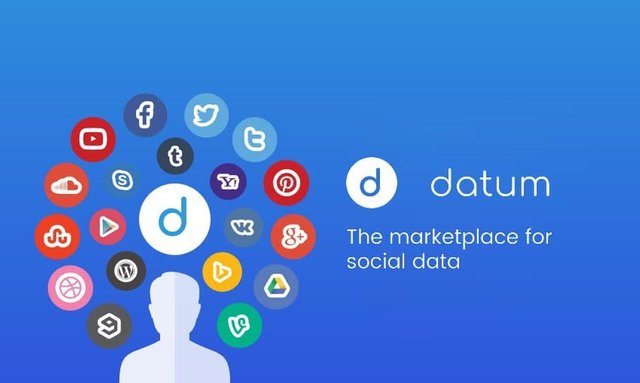
If you are not paying for the product, you are the product. - Andrew Lewis, 2010
The internet continues to evolve and with it, our privacy continues to be a matter of debate. It was once taken for granted by people who worked in advertising that a person's privacy was paramount. Then some advertisers broke that trust and thereafter came the annoying phone calls during the dinner hour. In the last few years, our private lives have been inundated with junk mail and our mailboxes real and virtual are filled to the tipping point with brand magazines and offers.
We are sitting smack dab in the middle of the data revolution. Every single company regardless of size or industry has the ability to collect data—on supplies, on inventory and of course, on consumers, just to name a few. And it’s no secret that data can aide in decision making and increase the productivity of our business operations. Whether you are on board or not, the data revolution has made tech companies out of all of us.
Most of the companies using their data to show some personal ads, or selling data to companies who are willing to use it for any reason. The breakdown here is, everybody needs somebody's data to examine the potential customers and serve them right.
Let me give you a couple of examples to think about.
You never paid for Facebook, Google, Foursquare, Swarm, Youtube, Whatsapp, Instagram or Twitter to use their default services. But those companies are the biggest ones in the world. How come they are abler to run their businesses and pay tons of money to their engineers?
I'll give another example to you, so that you will be able to harvest the answer by yourself.
Adding to the woes of privacy advocates and users, Facebook has admitted that it provided companies with special access to user data even after it had restricted it in 2015. The company continued to share the data with 61 technology companies including AOL, United Parcel Service, and dating app Hinge, Cnet reported.
Facebook said it granted a special one-time six-month extension to these companies. It also admitted that there were five other companies which could have accessed limited friends' data.
After reports surfaced online revealing Aleksandr Kogan’s ‘thisisyourdigitallife’ app exploiting Facebook to harvest user data, another researcher discovered an app which left the data of 120 million users exposed to anyone who tried it out. A third-party app called NameTests provided information to those who requested it with an access token that would allow continued access to a user's posts, photos and friends data for up to two months.
I assume you convinced.
I also assume you are saying - Oh, if my data is so important, why don't I store it somewhere safe or sell it if I want to? I could make some good profit from it.
Well, you can not do that without a decentralized network.
This is where Datum Network comes into play.
What is Datum?
The name Datum comes from Data. The noun datum is singular for data and it's used to denote a piece of information.
Datum is a blockchain-based platform that’ll ultimately allow users to retake control of their data. This idea goes beyond personal and habitual information and also covers Internet data that users can control but currently don’t.
To put it simply, Datum provides a marketplace secured by a blockchain ledger designed to put you in control of your data and turn it into a tradeable commodity. As the official website states, “data is the new oil,” so you’ll definitely want to be in full control of yours.
How Datum Solves This Problem?
Datum works by providing a decentralized and distributed high-performance NoSQL database based on a blockchain ledger. The technology will allow anyone to backup structured data (say, social network data or data collected from wearable devices) in a secure, private, and anonymous way. Then, Datum provides a marketplace where users can share or sell data on their own terms.
Here is a detailed explanation picture of it.
- The user first submits their data on to the decentralized platform, there will be a small gas fee to process.
- A storage node will receive the data and it will be replicated on to other nodes to make it safe.
- A consumer shows interest in buying the data.
- The user receives an offer for the purchase of their data, the details of the buyer will be displayed. The user then has the option of accepting, rejecting or making a counter offer.
- If the user accepts the offer then they'll receive DAT tokens, the decryption key will then be sent to the buyer.
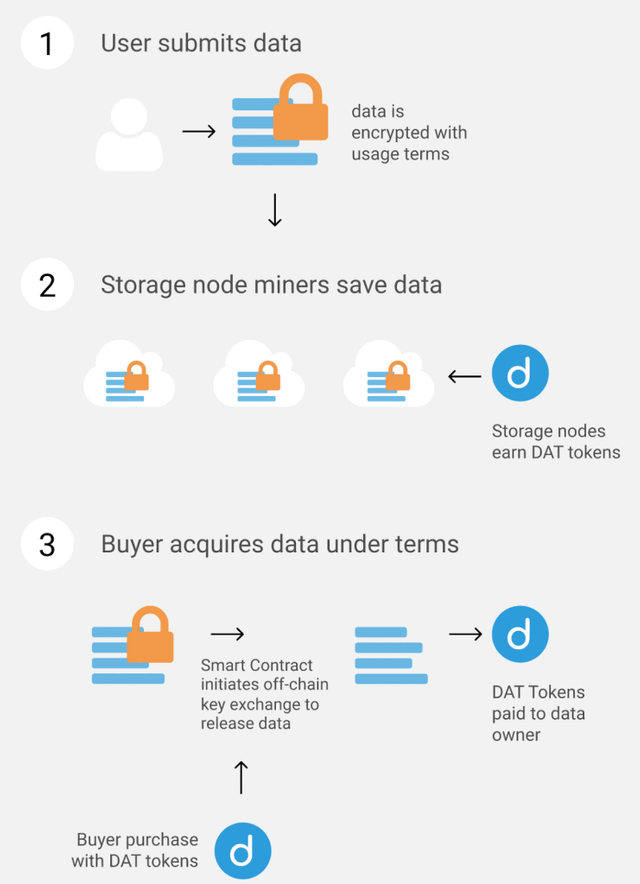
Storage nodes are decentralized computers that provide computing power and storage capacity to store the data decentralized. Storage nodes are incentivized to work and data is stored as long as it is paid for by either the consumer or owner of the data. Individuals running a storage node can’t access data as it is encrypted from source. Cost specifications are not supplied.
Datum features smart contracts within their network so users can make sure that buyers of the data live up to the terms and conditions set by the owner. Datum relies on purchasers of data to validate data and regulate fake data. Datum plans on implementing a trust ranking system for all users involved in trading on the network including storage node operators.
Features of Datum
Decentralized Data Storage
Datum provides secure, private, and anonymous storage of structured data. This storage platform will be fueled by blockchain network. Which means users will be able to benefit from its strengths.
Marketplace
There will be a marketplace which will give users to ability to share their data selectively or sell their data to trusted entities.
Storage Nodes
Miners running storage nodes are paid for storing and providing low latency access to data.
DAT Tokens
The Datum ecosystem revolves around DAT tokens. data owners pay small amounts of tokens to store their data. Storage miners earn DAT tokens to store and transmit data. And buyers can purchase DAT tokens to buy user data.
Mobile App
Datum will be available also as a mobile app.
DAT Token Usage
DAT is the only token to be used on the platform. Data owners pay small amounts of tokens to store their data. Storage miners earn DAT tokens to store and transmit data. And buyers can purchase DAT tokens to buy user data.
In another word, DAT will be the fuel of the platform.
Users will also have the option of registering to set up a storage node which requires a small payment of DAT, once their node is running they'll receive a percentage of each transaction.
Stakeholder Mechanism
Datum stakeholders map:
- Users – People who submit data personally, from IoT devices or any other data source;
- Storage nodes – These are providers of processing power and storage capacity. Storage nodes belong to the BigchainDB cluster, allowing the platform to store the submitted data on a global scale;
- Data consumers – These are all entities that wish to access the stored data. You, as an owner, can give your data under precise conditions, either for a fee or completely free;
- DAT token holders – Token holders will govern the network and “fuel” its ability to process transactions.
Team of Datum
Datum’s core team includes the following members:
- Roger Haenni – CEO, Co-Founder
- Gebhard Scherrer – Operations, Co-Founder
- VC Tran – Marketing, Co-Founder
- Theo Valich – Head of Growth
- Florian Honegger – Smart Contract Expert
- Vitaly Krinitsin – Community Manager
- Matt Kimbal – Programmer/Designer
- Tevon Strand-Brown – Software Engineer
- Luis Fernando Varela – Software Engineer
- Christiana Kuo-Chen Chien – Community Management
- Alex Yedomski – Programmer/Web-Developer
- Eugene Kyselov – Programmer/ Front-End Developer
The project’s advisory board consists of:
- Chris Miess – Previously CFO at TenX
- Daniel Saito – Managing Director for MySQL in Asia
- Michael Egorov – CTO and Co-Founder of NuCypher
Use Cases of Datum Platform
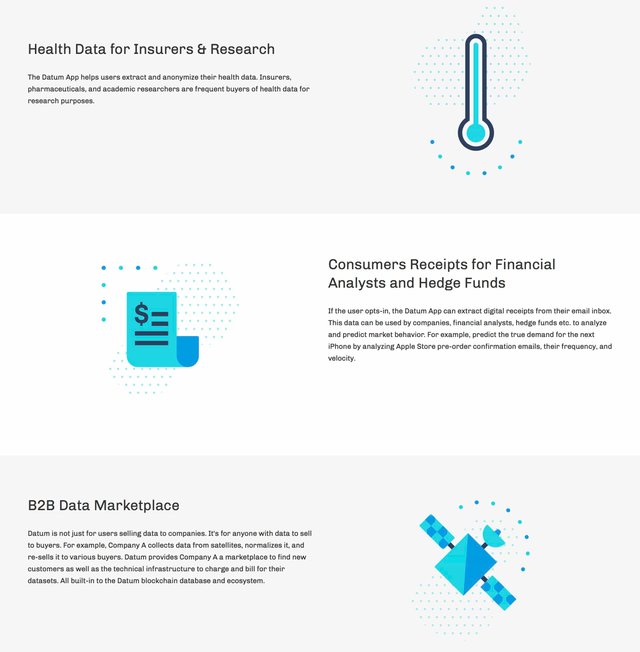
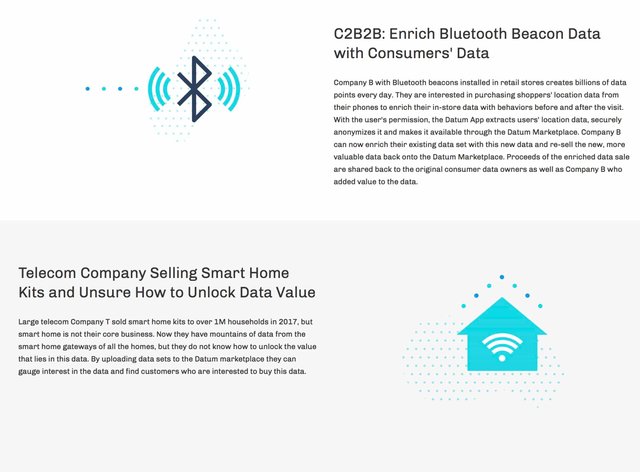
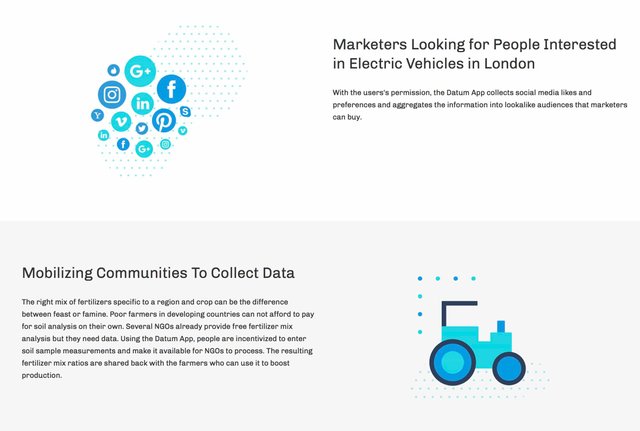
Roadmap
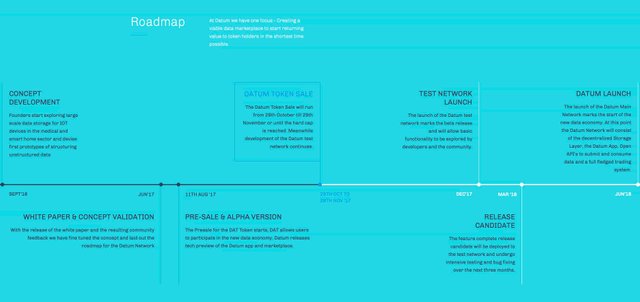
Useful Links
- Datum Website: https://datum.org/
- Datum Whitepaper: https://datum.org/assets/Datum-WhitePaper.pdf
- Datum Telegram: https://t.me/datumnetwork
- Datum BitcointalkANN: https://bitcointalk.org/index.php?topic=2049312.0
- Datum Twitter: https://twitter.com/datumnetwork
- Datum Facebook: https://www.facebook.com/datumnetwork
- Datum Linkedin: https://www.linkedin.com/company/datumfoundation/
This article was created in exchange for a potential token reward through Bounty0x